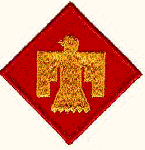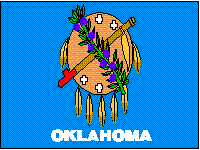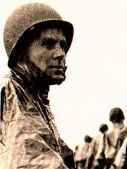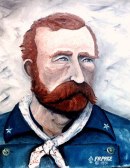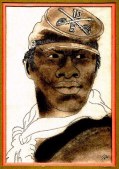www.DarbyRangers.Com | Follow Me
Bill Mauldin Memorial Page
|
Bill Mauldin World War II's Greatest Cartoonist
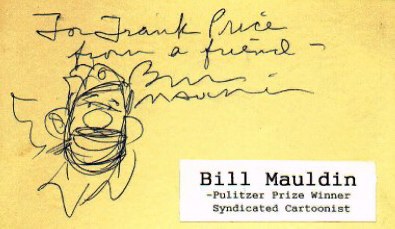 Thank You Willie and Joe...America will never forget;
When we needed it most...You made us Smile!
|
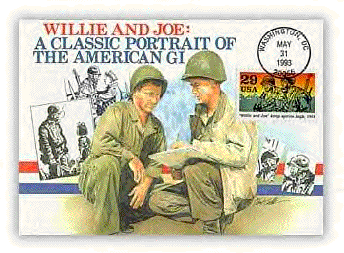 "Look at an Infantryman's eyes and you can tell how much war he has seen"
- Bill Mauldin creator of Willie & Joe
|
This is just a little story of meeting a great American and I can't bear not sharing this with everyone - I met Bill Mauldin in El Paso at a Press Convention in 1978; and knowing he was there I gathered up an armload of first edition "Up Front- with Willie & Joe" from my World War II comrades; for a treasured autograph and the second day of the convention the desk gave me his room number; and I camped on his door step at 5 am. I sat down in the hallway to wait; and eventually the door opened and out popped Mauldin.
"Well, hello there," he said, as I popped to attention before the infantryman's infantryman.
He noted the books; took one look at me and asked if I had breakfast yet. I had not and so he offered to buy me breakfast and we spent more than an hour talking about WWII, his cartoons, and my pitiful efforts at drawing (LOL!) Pretty soon it was obvious to me that this was a man of great humble character and depth and respect and genuine interest in his fellow man. You see 'Hollywood Heros' on TV but Mauldin is the real deal.
You will have to look in Maudlin's books; but, Bill's favorite personal cartoon is an infantryman about to use his .45 pistol to put a well-used jeep out of its misery while covering his eyes; and he loves the peace and quiet of New Mexico where he still continued to draw for syndication. We shared that love of irony and humor and peace and quiet of the Western US. There is nothing in the world like the desert Southwest for peace.
But, that orneriness that created Willie and Joe was still there...that spark of creative empathy poured out in picture words; and he asked where I was off to after the meal...I had been asked such questions before and wound up staying out all night, stealing cherries as a kid and taking people on snipe hunts...
There was this Lab and Lecture I was meant to be at...already been told to be there...
when he asked that question I knew right then and there I wasn't going...to be where I was supposed to be.
When Bill Mauldin said, " Follow Me" that was all it took.
He said his lecture would be more interesting and fun; and it was; people like Bill Mauldin have been helping me get into trouble all my life. I wouldn't trade that brief moment in my past for anything. And I can tell you just a moment of time spent by people who do not have to give you the time of day is precious treasure.
Bill Mauldin is truly a man of distinguished honor with a little dough-boyish deviltry in his soul. I hope he doesn't mind but I had to share this story and the above graphic he gave me.
Bill Mauldin belongs to us all; he is combat's consummate cartoonist. And he is a great American Treasure for making America smile when we needed it most... - F.R. 'Bob' Price/Editor
The Greatest Cartoonist of World War II is Bill Mauldin
2 time Pulitzer Prize-winning artist's "Up Front" has been reissued
In an early Bill Mauldin cartoon, five soldiers are crowded around a puny fire in the snow. One is holding a Very flare pistol pointed skyward while another reads from Charles Dickens' A Christmas Carol and says, "Corp'l Ginnis an' his Very pistol will now contribute the Star o' Bethlehem."
That was the soldiers' Christmas to Mauldin, interpreter of World War II GIs to themselves - an occasion for hardy sentimentality. Christmastime in wartime meant not comfort, but the lack of it. A later cartoon, published on Christmas Day (and reprinted in Up Front, Mauldin's enduring World War II classic), involves his two famous dogfaces, Willie and Joe. They are in a dank cave, which also shelters two bedraggled, woeful children, huddled next to Joe, who has obviously been talking to them. Willie says, "Wisht somebody would tell me there's a Santa Claus."
Mauldin's cartoons, published first in the 45th Division News and later in the military newspaper Stars and Stripes, held up a mirror to the lives of soldiers in the European theater, who liked what they saw. Through wider circulation, they also explained the lives of soldiers to people on the home front. Mauldin won a Pulitzer Prize for editorial cartooning in 1945, the year that Up Front - reissued by Norton ($24.95) - was first published.
(Mauldin, 79, won a second Pulitzer in 1959 as an editorial cartoonist for the St. Louis Post-Dispatch. Later he moved on to the Chicago Sun-Times.)
In an introduction to the new edition, historian Stephen Ambrose says of Mauldin,
"More than anyone else, save only Ernie Pyle, he caught the trials and travails of the GI." So he did and, like Pyle - our most famous and gifted war correspondent - he favored the infantry, because it had more trials and travails. Six days a week, often under arduous conditions, he drew the hard and perilous lives of the dogfaces, and won the admiration of nearly every enlisted man"
.
Gen. George S. Patton, commander of the Third Army, thoroughly despised Mauldin and his creations and would have silenced him if he could have. Mauldin disliked Patton's insistence on battlefield spit and polish and what he regarded as his treatment of GIs as peasants.
Mauldin admits that Willie and Joe are all but indistinguishable from each other. And why not? They are Every dog face - dirty, grizzled, unshaven, tired, put-upon, baggy-pantsed, hungry. And indispensable.
Mauldin's style of drawing is something to admire in itself - swift, sure, bold strokes in stark black and white with no gray tones. (Fellow cartoonist and World War II veteran Charles Schulz once said he liked the way Mauldin drew mud.) Equally admirable are his wisdom and depth of understanding, in both the cartoons and accompanying text.
Armed with this talent and understanding, he drew Willie and Joe fighting the enemy: the cold, the wet, the pomposity's and privilege of rank - and, of course, the Germans. He catches war's eternal grubbiness and absurdity. The cartoons not only hold up marvelously well, they are, despite the difficulties of one time understanding another, timeless.
Each reader will have a favorite. Anyone who has occupied a low rung on the military ladder will appreciate the one in which two officers are gazing at spectacular mountain scenery, and one turns to the other and says, "Beautiful view. Is there one for the enlisted men?"
In another, Willie and Joe are ducking shot and shell, and Willie says, "I feel like a fugitive from th' law of averages." Another expresses a universal urge amid the wreckage of war. Standing in a bombed-out house and staring at the lone pane of unbroken glass in a window frame, Willie says, "Go ahead, Joe. If ya don't bust it ya'll worry about it all night."
Up Front was a great success in its first edition. Ambrose says it sold 3 million copies and was No. 1 on the New York Times best-seller list "an astonishing 18 months."
When the war ended, Willie and Joe went home and, along with the other dogfaces, disappeared into the anonymity of civilian life. (The cartoonist told one interviewer that he planned to have them killed on the last day of the war, but the Stars and Stripes editor said he wouldn't print it.) Ambrose says Mauldin brought them back into cartoon life only twice, for the funerals of Gens. George C. Marshall in 1959 and Omar Bradley in 1983.
That is technically right, although the two did make postwar appearances, including in Mauldin's 1947 book, Back Home. Nevertheless, it is true that Mauldin pretty much retired them, which was a wise thing to do. As the periodic reissues of Up Front show, old soldiers never die, especially if they fade away. - Roger K. Miller/The Inquirer
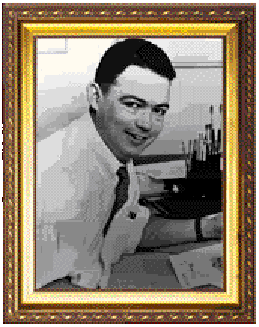 Bill Mauldin (1922 - )
Bill Mauldin (1922 - )William Henry Mauldin joined the Army newsletter Stars and Stripes as a cartoonist during World War II. There he perfected Willie and Joe, the muddy, weary "dogfaces" who portrayed the drabness of the foot soldier's life. Despised by the conserva-tive brass as disrespectful but loved by G.I.s as their own, the cartoons won Bill Mauldin a 1945 Pulitzer Prize. A self-styled "stirrer-upper," Mauldin joined the St. Louis Post-Dispatch in 1958. Dubbed "the hottest editorial brush in the U.S.," he won his second Pulitzer Prize that year. Syndi-cated in over 250 newspapers, Bill Mauldin battled injustice & pretense with irony and humor. A Great American.
Bill Mauldin the Immortal Infantryman
No one person was more responsible for immortalizing the American infantryman in World War II than cartoonist Bill Mauldin. Mauldin was 18 when he enlisted in the US Army and the boyish looking recruit from New Mexico, who worked for the Stars and Stripes, was able to capture the grim wit of the foxhole in a way that was loved by men in the ranks and hated by many of their officers.
His most memorable creations were Willie and Joe, two sardonically humorous combat soldiers who did a lot of griping but still got the job done.
The home front also loved Willie and Joe; these two unromantic characters gave them an accurate picture of what it was like to be an American GI. Because Americans were new to the war, their inexperience cost them dearly in the beginning, but they quickly earned the enemy's respect as a formidable opponent.
In fact, German Field Marshal Erwin Rommel said it best.
"What was really amazing was the speed with which the Americans adapted themselves to modern warfare. Starting from scratch an army has been crafted in the very minimum of time, which, in equipment, armament and organization of all arms, surpasses anything the world has yet seen," said Rommel.
After the war, Bill Mauldin went on to draw cartoons about the soldier's difficult transition back to civilian life. He received a Pulitzer Prize for one of his cartoons in 1945, and another in 1959.
He appeared and received good reviews for his part in the movie about combat in the wide-screen version of the classic, "The Red Badge of Courage".
Mauldin continued his life's work as a political cartoonist until his retirement in 1992 he resides
in Santa Fe New Mexico and began to sculpt much of his early cartoon work.
Bill Mauldin's Cartoons are on display at:
Oklahoma City; Oklahoma
You can view some of Mauldin's Cartoons at:
|
Great Americans
(1) St Louis Post Dispatch Photo

